Unused doors can present a unique challenge in both homes and offices, often disrupting the visual flow of a space or creating awkward pockets that undermine interior design. Whether it’s a result of remodeling, changes in room function, or specific layout needs, these doors may become eyesores or inconvenience the intended use of a room. If you’ve ever wondered how to hide an unused door, you’re not alone; homeowners and designers alike frequently search for creative, effective ways to address this common issue.
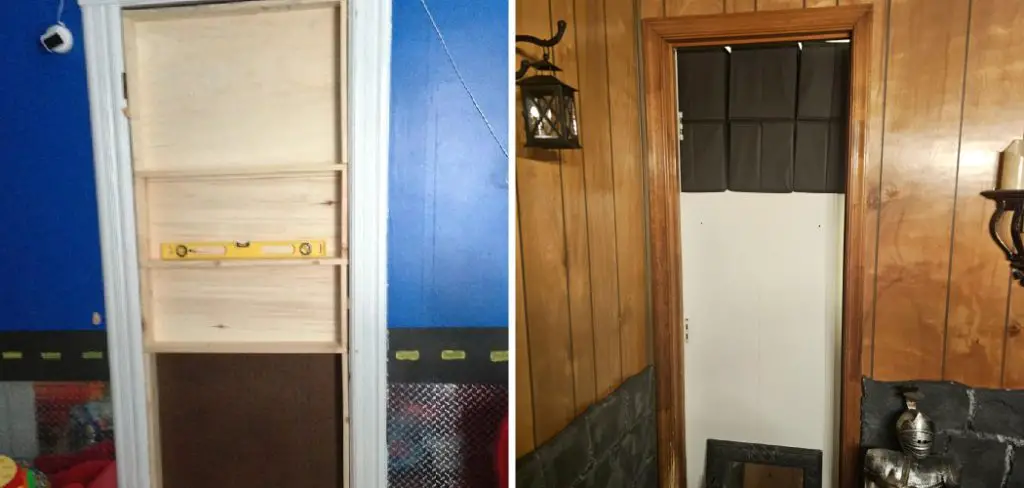
Finding the right approach is about more than just aesthetics. Hiding an unused door can contribute to the cohesive look and functional arrangement of your space. From simple DIY fixes to more permanent solutions, there’s no shortage of options to suit various needs, styles, and budgets.
In this comprehensive guide, we’ll walk you through practical methods for hiding unused doors, outline the pros and cons of each, and provide tips to ensure your chosen solution integrates seamlessly with your room’s existing décor. Whether you need a quick fix or a lasting change, read on to learn exactly how to hide an unused door and transform your living or working environment.
Understanding the Challenges of Unused Doors
Before you select a solution, it helps to understand why unused doors pose such persistent problems. In many cases, these doors remain after renovations close off part of a room, convert a space to new use, or redirect foot traffic elsewhere in the home. Sometimes, unused exterior doors were part of a previous entrance that no longer aligns with the current floor plan, or perhaps internal doors once led to a room that has since been absorbed or repurposed.
The primary challenges can include:
- Wasted space where the door frame interrupts wall storage or design plans
- Drafts, temperature fluctuations, or unwanted noise due to a door that doesn’t seal tightly
- Inconsistent aesthetics, like mismatched doors, trim, or doorknobs that clash with updated interiors
Why Addressing an Unused Door Matters
By proactively dealing with an unused door, you not only improve the efficiency of your space but also restore harmony to your design. Instead of simply tolerating a frustrating layout or visual hiccup, you’ll open up valuable wall space, reduce drafts or sound transfer, and enhance the overall personality of your rooms.
How to Hide an Unused Door: Options for Hiding an Unused Door
Hiding an unused door doesn’t have to mean major construction. There are many techniques—ranging from decorative quick fixes to more involved, lasting remodels—that can make even the most inconvenient door virtually disappear. Here’s an overview of some of the most effective and popular ways to tackle the problem.
Creating a Decorative Wall Covering
One of the fastest and most flexible solutions is to simply disguise the door with a decorative wall covering. Large-scale artwork, tapestries, or even framed photo arrangements can serve this purpose beautifully. Start by measuring the door and selecting a piece that will adequately cover the entire surface, or layer several elements for a gallery-wall effect.
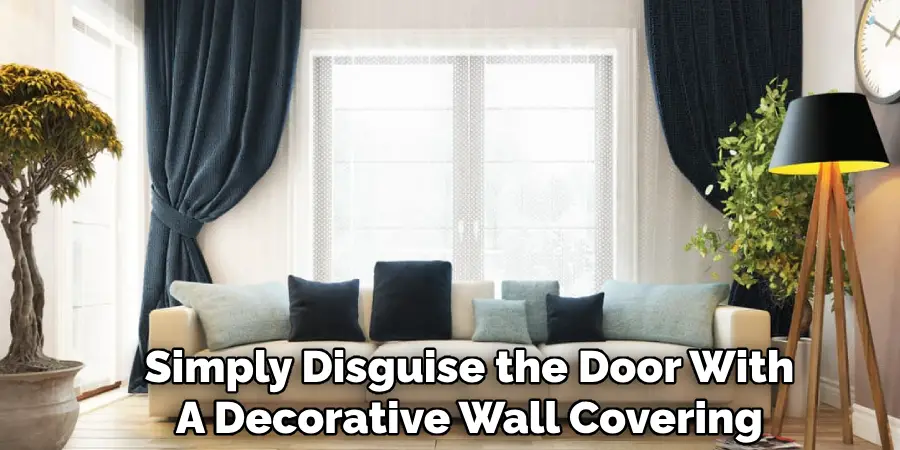
When choosing décor, try to echo existing colors and styles in the room. A vibrant tapestry can add warmth and texture to a neutral space, while a sleek, minimalist piece of art might complement modern interiors. You can also consider adhesive wall panels or removable wallpaper that extends across the door and adjacent wall, camouflaging the boundary between the two.
Not only does this approach provide a fast transformation, but it also allows you to switch out or update your decorative elements over time, keeping your space fresh and current.
Using Furniture Placement
If you’d rather not hang anything on the door itself, repositioning furniture can be surprisingly effective. Bookshelves, storage cabinets, armoires, or even modular shelving units can be pushed in front of the unused door to make it vanish from sight.
To maintain both function and aesthetics, select furniture that fits naturally into the room and doesn’t look forced. For example, a built-in bookcase can encompass the doorway, offering extra storage while enhancing the wall’s continuity. Alternatively, a tall wardrobe or credenza provides additional utility without interrupting traffic flow.
It’s best to avoid oversized pieces that block light switches, electrical outlets, or other necessary features. Always ensure that the furniture remains stable and won’t tip if jostled, especially if the door is in a high-traffic area.
Permanent Solutions to Conceal the Door
For homeowners seeking a more enduring fix, there are several permanent options for concealing an unused door. These approaches often require more effort and resources, but they deliver a flawless, integrated result that looks like the door was never there.
Painting or Texturing to Match the Wall
This option is ideal for those who prefer not to take on a major renovation but still want a seamless look. After removing the doorknob and other protruding hardware, you can paint the door the exact color of the surrounding wall. For textured or paneled walls, use drywall compound, sandpaper, or a textured roller to replicate the wall’s finish on the door’s surface.
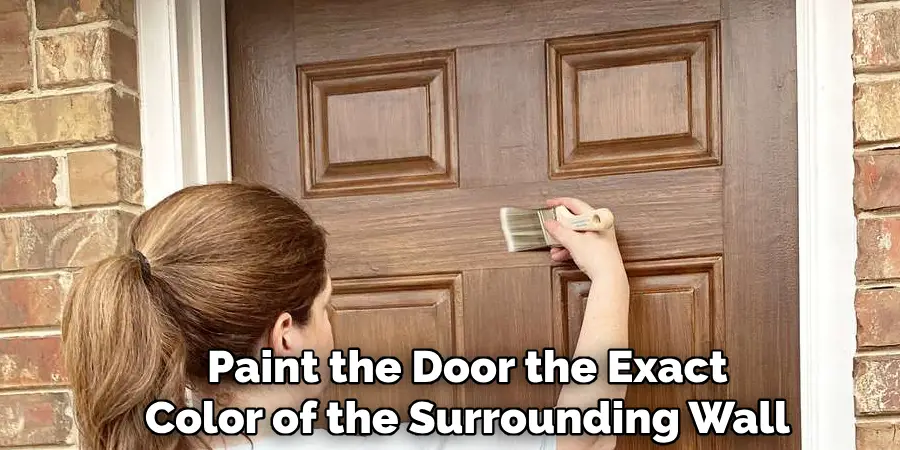
The goal is to minimize visual cues that a door is present—no contrasting paint, trim, or hardware should remain. Be sure to paint or refinish any frame or molding around the door to match as closely as possible. Careful preparation and attention to detail are key to making the disguised door virtually undetectable.
Sealing and Drywalling the Door
For those ready to commit to a permanent change, sealing and drywalling over the unused door is the most comprehensive solution. Begin by confirming that the door’s location isn’t needed for fire egress or ventilation (especially important in bedrooms or basements). Next, remove the door from its hinges, detach the frame, and fill the cavity with insulation if the door is located on an exterior wall.
Once prepped, install a new section of drywall over the opening, aligning it with the surrounding wall. Secure and tape the seams, apply joint compound, sand smooth, and finish with paint and texture that matches the rest of the room. This job may require the skill of a professional contractor, but the result is a complete elimination of the door—the wall will be indistinguishable from any other.
Creative Temporary Fixes
Sometimes a full remodel isn’t necessary or practical, especially if you’re renting, planning a future redesign, or simply prefer flexibility. In such cases, creative temporary fixes offer a stylish and reversible way to conceal an unused door.
Installing a Sliding Screen or Curtain
Soft materials such as curtains, sliding screens, or fabric panels can be hung from ceiling tracks or wall-mounted rods to cover the unused doorway. Choose fabrics that drape well and add visual interest, from light and airy sheers to bold patterned textiles. Sliding barn door hardware works well for panels if you want an industrial or rustic touch.
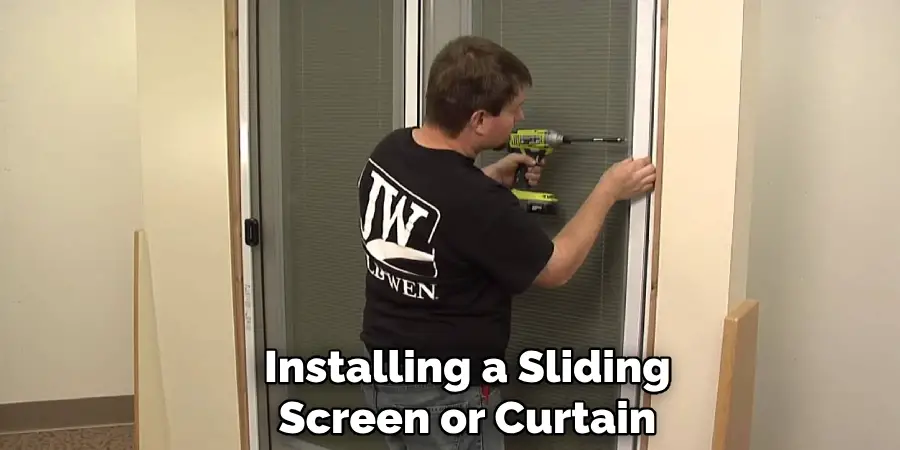
This method quickly hides the door and adds a decorative feature, while still providing access if needed. Curtains or screens can be swapped out for different colors and textures with each season or updated to your home’s style.
Creating a Chalkboard or Dry-Erase Surface
For a functional and fun approach, consider transforming the door into a message board or family organization center. Chalkboard paint or peel-and-stick dry-erase sheets can easily turn the door into a writable surface. This is especially useful in kitchens, playrooms, or home offices where you can jot down notes, schedules, or to-do lists.
Simply prep the door’s surface with gentle sanding, apply your chosen material, and start using it as a communication hub. The original door remains underneath, and reversing the change in the future is as simple as repainting or peeling away the overlay.
Addressing Functional Needs While Concealing the Door
In some situations, the unused door may need to be accessible from time to time, such as during rearrangements, seasonal needs, or emergency egress. If that’s the case, it’s important to find solutions that conceal the door without making it difficult to use when necessary.
Options include magnetic panels, removable wall coverings, or double-sided decorative screens. Look for solutions that are lightweight and easy to install or remove as needed. You might also consider custom fabric covers or stretch canvas frames that can be hooked or clipped into place without damaging the door.
Reversible solutions are versatile, allowing you to maintain a polished room year-round and adapt quickly as your needs change.
Common Mistakes to Avoid
When attempting to hide an unused door, certain missteps can undermine your efforts or result in more work down the line. The following are some common mistakes and how to avoid them:
- Mismatched Designs: Failing to match paint, texture, or decor can draw more attention to the door. Double-check samples and test in natural light before committing.
- Improper Sealing: In permanent installations, neglecting to seal air gaps or reinforce with insulation can result in drafts, pest issues, or sound transfer.
- Blocking Essentials: Avoid covering up outlets, switches, or air vents with furniture or panels. This can create inconvenience and even violate building codes.
- Overly Complex Solutions: Sometimes simpler is better. Overly elaborate build-outs can be time-consuming and difficult to reverse.
- Ignoring Practicality: Make sure any decorative or temporary fix still allows for necessary movement, cleaning, or even emergency use if applicable.
By considering these points and planning ahead, your effort in disguising an unused door will yield a much more satisfactory, stress-free result.
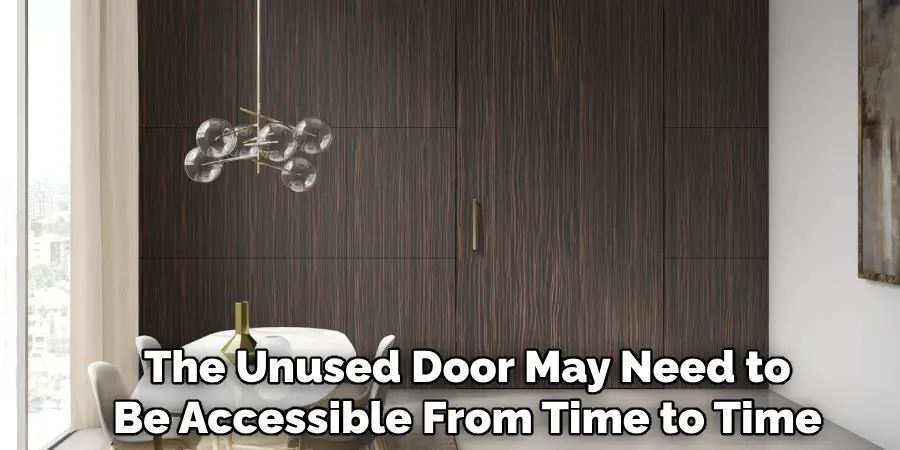
Cost Considerations and Budget-Friendly Ideas
The cost of hiding an unused door varies widely based on your approach. For temporary solutions—like curtains, wall art, or chalkboard film—costs can be minimal. Most DIY options require only basic tools, paint, or fabric, making them suitable for tight budgets.
Permanent solutions like drywalling are higher in cost, especially if you hire a professional. In addition to drywall materials, costs may include labor, repainting, or replacing trim. Furniture-based solutions fall somewhere in between, depending on whether you utilize existing pieces or purchase new ones.
For those looking to save:
- Repurpose items: Use a spare bookcase or armoire, or pick up a piece from a thrift store.
- Get creative with paint: A simple coat of paint or application of self-adhesive wall covering can work wonders.
- DIY installations: For moderate handiness, most temporary and even some permanent solutions can be accomplished with online tutorials and a few hours of work.
- Keep it simple: Sometimes, the smallest tweak (like removing the doorknob and hanging a large art piece) makes the biggest difference.
No matter your budget, there are approaches to fit both your needs and your wallet.
Final Touches to Blend the Space Seamlessly
Once you’ve successfully hidden your unused door, thoughtful finishing touches can further unify the space and elevate the results. Consider adding new baseboards, trim, or crown molding around the concealed area to mimic existing architectural details. Decorative accents like coordinated drapes, throw pillows, or artwork elsewhere in the room tie all elements together for a harmonious look.
If you used a bold color or unique feature to cover the door, repeat that color or motif in a few strategic locations around the room to create balance. For painted-over doors, carefully inspect the surface for uneven spots or edges and touch up as needed. For curtain-based solutions, consider matching fabrics or textures elsewhere, such as on seat covers or lampshades.
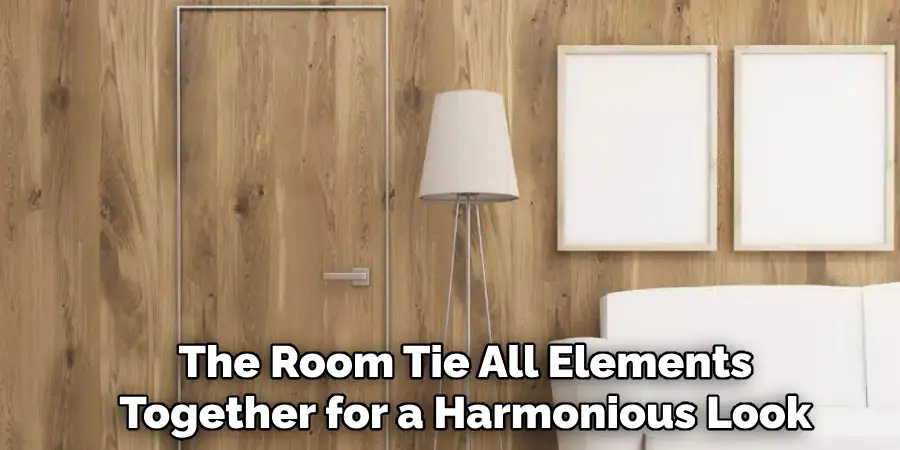
Finally, maintain any new covering or installation with regular cleaning and occasional checks to ensure everything remains secure and visually appealing.
Conclusion
Hiding an unused door goes beyond simple aesthetics—it can unlock new options for layout, décor, and even energy efficiency. Whether you prefer a quick, reversible fix or a lasting remodel, knowing how to hide an unused door empowers you to reclaim floor space and achieve the look you want for your home or office.
Solutions range from adding decorative coverings, repositioning furniture, and painting, to completely sealing and drywalling over the doorway. Each method comes with unique benefits and considerations, so take your time to assess your priorities, budget, and personal style.
Most importantly, remember that there’s no “one size fits all” answer. The best approach is the one that works with your needs and enhances the beauty and practicality of your unique space. By following the steps outlined here, you’ll no longer wonder how to hide an unused door—you’ll have the tools and confidence to transform it into an asset for your home’s design.
